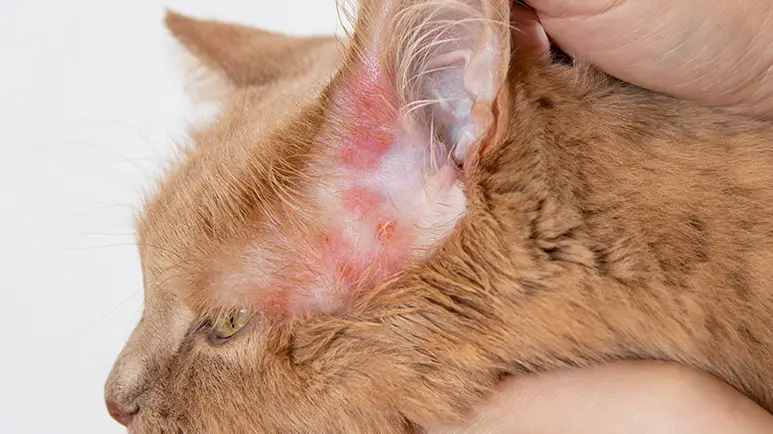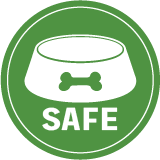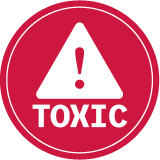This Miserable Condition Can Affect Your Pet, Even if She's Housebound
Especially if you have a cat that shares her home with a dog, she can be plagued by this condition that can be much more than a nuisance. It can lead to skin allergies and overwhelming irritation, tapeworms, anemia, and even harbor disease.

STORY AT-A-GLANCE
- Flea allergy dermatitis (FAD) is a condition in which cats develop a hypersensitivity to flea bites
- It can take only a flea or two to trigger FAD in a susceptible cat; FAD can lead to a behavioral condition called neurodermatosis
- Treatment of a cat with FAD involves using a flea comb daily to remove flea and flea dirt, frequent baths and eradicating fleas from the kitty’s environment
- There are safe, nontoxic preventives that can help your cat avoid fleas, as well as all-natural remedies for flea invasions in and around your home
- If you need to use a chemical preventive to keep your cat flea-free, take all necessary precautions to use the product as safely as possible
Editor's Note: This article is a reprint. It was originally published June 13, 2017.
Fleas, which are related to ants and beetles, feed on your cat's blood and their bites can lead to irritation and skin allergies. Sometimes fleas are no more than a nasty nuisance, but they have the potential to cause serious problems. Fleas can transmit tapeworms, cause severe anemia in young animals and can harbor cat scratch disease.
They can also trigger a condition in pets called flea allergy dermatitis (FAD), which is characterized by a hypersensitivity reaction to flea bites. FAD is relatively common in cats, especially kitties who go outdoors, and those who live in households with dogs.
An allergy to fleas can develop at any age, but typically shows up in young cats under the age of 5. Interestingly, it's not the bite of a flea that makes your kitty scratch; it's the flea saliva, which can cause overwhelming irritation disproportionate to the actual number of fleas on your cat.
Symptoms of Flea Allergy Dermatitis in Cats
Most pet parents assume if their cat isn't infested with fleas, the itching can't be caused by fleas. But if kitty has FAD, the saliva of just one or two fleas can make her miserably itchy and uncomfortable for weeks (long past the death of those two fleas).
The classic symptom of flea bite hypersensitivity is frequent or constant severe itching and scratching, hair loss and skin sores. A cat's hind end is more often the problem area, but lesions can occur anywhere on the body. Secondary bacterial infections are a risk for cats with open skin sores.
Most kitties with FAD have symptoms that worsen with age, and are often episodic, meaning they experience flare-ups in between periods of relative comfort. Sometimes cats with FAD go on to develop neurodermatosis as a result of flea bite hypersensitivity. Neurodermatosis is a condition characterized by restless, anxious, irritated or nervous behavior as a result of FAD.
Diagnosis and Treatment Options
There's no specific diagnostic test for flea allergy dermatitis. To confirm your suspicions, the best approach is to simply put your cat on a light-colored towel and use a flea comb to help reveal fleas and flea dirt. Flea dirt looks like real dirt, but when you drop it into a small amount of rubbing alcohol or water, it will release a red color (blood) as it dissolves.
Resolving your cat's flea problem will depend to a large extent on whether she's reacting to just a few fleas or an infestation. Either way, you'll definitely want to use the flea comb at least once a day until you're confident there are no more fleas on her or in her environment.
Cats aren't big on baths, but if your kitty is itchy from flea saliva, she'll need to be bathed frequently until the fleas are gone. Even if she hates it while it's happening, her skin will feel better after a bath, and any fleas on her body will drop into the water. Another benefit: pests of all kinds are less attracted to clean animals.
An alternative to a full bath and shampoo is to simply dip your cat in a sink or tub of warm water, which will cause most of the fleas to fall off. Adding a cup of apple cider vinegar to a gallon of rinse water will help make her less appealing to fleas.
Safe Flea Preventives for Kitty
Spot-on and similar pest repellent products can have adverse side effects ranging from skin irritation to seizures and paralysis. Misuse of these products has even resulted in death. Instead, try some or all of these nontoxic alternatives:
- Use a nontoxic herbal pest repellent spray, collar or spot-on product.
- Make a natural flea repellent solution with equal parts apple cider vinegar (preferably raw and organic) and water. Pour the mixture into a spray bottle, spritz your hands and stroke your cat, avoiding his face. You can also spray his bedding. Add a little boost to the solution with a drop of geranium, lemongrass, lavender, neem or catnip essential oils, all of which help deter fleas.
- Apply a light dusting of food-grade diatomaceous earth (DE) on your carpets, bare floors and kitty's bedding, as well as down her spine (avoiding his head) to kill fleas.
- Flea comb kitty every day. Checking daily for the presence of fleas is the most natural, common sense approach of all. Supercharge your grooming session with antiparasitic flower essences.
To keep your cat's immune system strong, which will reduce his appeal to pests, feed a nutritionally balanced, species-appropriate fresh food diet and provide fresh, purified drinking water. Also avoid exposing your kitty to immune-system stressors like environmental chemicals (including indoor chemical cleaning supplies and outdoor pesticides and lawn chemicals), medications, vaccinations and electromagnetic fields (EMFs).
Natural Flea Prevention Strategies for Your Home and Yard
In addition to getting rid of and preventing fleas on your cat's body, you'll also need to clear her environment of fleas using nontoxic methods, and keep her indoors during pest season. If you have a dog in the family, you'll need to ensure he's also flea-free. To make your home and yard less hospitable to pests:
- Vacuum your home often (carpets, floors, furniture, etc.) and empty the vacuum canister immediately
- Wash bed linens, pet bedding and throw rugs frequently
- Keep your lawn mowed and clear brush, leaves, tall grass and weeds from your yard and areas your cat frequents
- Keep stacked wood off the ground and away from your house
- After the growing season, clear perennial plants and other brush from your garden
- Add beneficial nematodes and lady bugs to your yard, both of which are natural predators of fleas
- Use natural pest-deterring lawn sprays (available online as well as through many natural lawn care companies)
Choosing to Use a Chemical Pest Preventive
If despite your best efforts your kitty is dealing with an intractable flea allergy dermatitis problem, your veterinarian will probably recommend a chemical spot-on preventive. If you choose to go this route, here are some guidelines to follow:
- Be very careful to follow dosing directions on the label, and if your pet is at the low end of a dosage range use the next lowest dosage. Be extremely cautious and do not under any circumstances apply dog product to your cat.
- Don't depend exclusively on chemical treatments. Rotate natural preventives with chemical ones including diatomaceous earth, pet-friendly essential oil products and natural deterrent collars. An every-other-month rotation works well for many pet owners.
- Monitor your cat for adverse reactions after you apply a chemical product — especially when using it for the first time.
- Your kitty's liver will be tasked with processing the spot-on chemicals that make it into the bloodstream, so it can be very beneficial to give him a supplement to help detoxify the liver. Consider giving milk thistle, which is a detox agent and also helps to actually regenerate liver cells.
Work with your vet on how much to give your cat depending on her age, weight and the medications she's taking. Ideally give one dose daily for seven days following any flea preventive application. Another recommended product is chlorella, a super green food that is a very powerful detox agent. Your holistic veterinarian can advise you on how much chlorella to give your pet depending on his toxin load.











